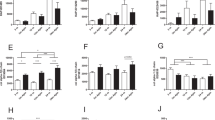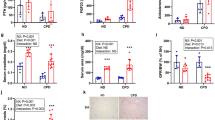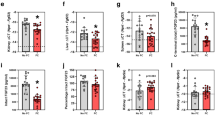Abstract
Consuming a lower acid (and particularly lower phosphate) diet and/or supplementing the diet with base precursors, such as bicarbonate, might have a number of mitigating effects on the aging process. These include: (1) slowing progression of fibrosis by reduction of high endogenous acid production to preserve net acid excretion and minimize the degree of systemic acidosis; (2) avoiding the downregulation of klotho, a membrane and soluble factor associated with aging. Klotho declines when constant high dietary phosphate intake leads to an increase in FGF23 production; and (3) increasing activity of the enzyme telomerase, an important factor in maintaining telomere length, another factor associated with longer lifespan. Current evidence is based on studies in invertebrate and small animal models. These results, and extrapolations of associated human studies, suggest that low acid-producing diets, or neutralization of the low grade metabolic acidosis seen in humans with age-related renal dysfunction could potentially lead to a longer, healthier lifespan.
This is a preview of subscription content, access via your institution
Access options
Subscribe to this journal
Receive 12 print issues and online access
$259.00 per year
only $21.58 per issue
Buy this article
- Purchase on Springer Link
- Instant access to full article PDF
Prices may be subject to local taxes which are calculated during checkout

Similar content being viewed by others
References
Di Iorio B, Aucella F, Conte G, Cupisti A, Santoro D. A prospective, multicenter, randomized, controlled study: the correction of metabolic acidosis with use of bicarbonate in Chronic Renal Insufficiency (UBI) Study. J Nephrol. 2012;25:437–40. https://doi.org/10.5301/jn.5000014.
White WE, Yaqoob MM, Harwood SM. Aging and uremia: is there cellular and molecular crossover? World J Nephrol. 2015;4:19–30.
Brenner BM, Lawler EV, Mackenzie HS. The hyperfiltration theory: a paradigm shift in nephrology. Kidney Int. 1996;49:1774–7.
Rowe JW, Andres R, Tobin JD, Norris AH, Shock NW. The effect of age on creatinine clearance in men: a cross-sectional and longitudinal study. J Gerontol. 1976;31:155–63.
Lindeman RD, Tobin JD, Shock NW. Association between blood pressure and the rate of decline in renal function with age. Kidney Int. 1984;26:861–8.
Lindeman RD, Tobin J, Shock NW. Longitudinal studies on the rate of decline in renal function with age. J Am Geriatr Soc. 1985;33:278–85.
Bushinsky DA, Lam BC, Nespeca R, Sessler NE, Grynpas MD. Decreased bone carbonate content in response to metabolic, but not respiratory, acidosis. Am J Physiol. 1993;265:F530–6.
Mitch WE, Du J, Bailey JL, Price SR. Mechanisms causing muscle proteolysis in uremia: the influence of insulin and cytokines. Min Electrolyte Metab. 1999;25:216–9.
Lemann J Jr, Lennon EJ, Goodman AD, Relman AS. The role of fixed tissue buffers in acid-base regulation. Trans Assoc Am Physicians. 1964;77:188–95.
Adler S, Lindeman RD, Yiengst MJ, Beard E, Shock NW. Effect of acute acid loading on urinary acid excretion by the aging human kidney. J Lab Clin Med. 1968;72:278–89.
Uribarri J, Douyon H, Oh MS. A re-evaluation of the urinary parameters of acid production and excretion in patients with chronic renal acidosis. Kidney Int. 1995;47:624–7.
Agarwal BN, Cabebe FG. Renal acidification in elderly subjects. Nephron. 1980;26:291–5.
Arnett TR, Dempster DW. Effect of pH on bone resorption by rat osteoclasts in vitro. Endocrinology. 1986;119:119–24.
Bushinsky DA, Smith SB, Gavrilov KL, Gavrilov LF, Li J, Levi-Setti R. Acute acidosis-induced alteration in bone bicarbonate and phosphate. Am J Physiol Ren Physiol. 2002;283:F1091–7.
Frick KK, Bushinsky DA. Chronic metabolic acidosis reversibly inhibits extracellular matrix gene expression in mouse osteoblasts. Am J Physiol. 1998;275:F840–7. https://doi.org/10.1152/ajprenal.1998.275.5.F840.
Bailey JL, Wang X, England BK, Price SR, Ding X, Mitch WE. The acidosis of chronic renal failure activates muscle proteolysis in rats by augmenting transcription of genes encoding proteins of the ATP-dependent ubiquitin-proteasome pathway. J Clin Investig. 1996;97:1447–53.
Rajan VR, Mitch WE. Muscle wasting in chronic kidney disease: the role of the ubiquitin proteasome system and its clinical impact. Pediatr Nephrol. 2008;23:527–35.
Wesson DE, Jo CH, Simoni J. Angiotensin II receptors mediate increased distal nephron acidification caused by acid retention. Kidney Int. 2012;82:1184–94. https://doi.org/10.1038/ki.2012.267.
Wesson DE, Simoni J. Increased tissue acid mediates a progressive decline in the glomerular filtration rate of animals with reduced nephron mass. Kidney Int. 2009;75:929–35. https://doi.org/10.1038/ki.2009.6.
Goraya N, Simoni J, Jo C, Wesson DE. Dietary acid reduction with fruits and vegetables or bicarbonate attenuates kidney injury in patients with a moderately reduced glomerular filtration rate due to hypertensive nephropathy. Kidney Int. 2012;81:86–93. https://doi.org/10.1038/ki.2011.313.
Lennon EJ, Lemann J Jr. Influence of diet composition on endogenous fixed acid production. Am J Clin Nutr. 1968;21:451–6.
Kurtz I, Maher T, Hulter HN, Schambelan M, Sebastian A. Effect of diet on plasma acid-base composition in normal humans. Kidney Int 1983;24:670–80.
Barber PJ, Rawlings JM, Markwell PJ, Elliott J. Effect of dietary phosphate restriction on renal secondary hyperparathyroidism in the cat. J Small Anim Pract. 1999;40:62–70.
Shiguang Liu L, Darry L Q. How fibroblast growth factor 23 works. J Am Soc Neph. 2007;18:1637–47. https://doi.org/10.1681/ASN.2007010068.
Kuro-O M. Phosphate and Klotho. Kidney Int. 2011;79121:S20–3. https://doi.org/10.1038/ki.2011.26.
Haussler MR, Whitfield GK, Haussler CA, et al. 1,25 Dihydroxyvitamin D and klotho: a tale of two renal hormones coming of age. Vitam Horm. 2016;100:165–230.
John GB, Cheng CY, Kuro-o M. Role of Klotho in aging, phosphate metabolism, and CKD. Am J Kidney Dis. 2011;58:127–34. https://doi.org/10.1053/j.ajkd.2010.12.027.
Isakova T, Cai X, Lee J, Xie D, et al. Longitudinal FGF23 Trajectories and mortality in patients with CKD. J Am Soc Nephrol. 2018;29:579–90. https://doi.org/10.1681/ASN.2017070772.
Kurosu H, Yamamoto M, Clark JD, et al. Suppression of aging in mice by the hormone Klotho. Science. 2005;309:1829–33. https://doi.org/10.1126/science.1112766.
Ohnishi M, Razzaque MS. Dietary and genetic evidence for phosphate toxicity accelerating mammalian aging. FASEB. 2010;24:3562–71. https://doi.org/10.1096/fj.09-152488.
Hu MC, Shi M, Zhang J, et al. Klotho deficiency causes vascular calcification in chronic kidney disease. J Am Soc Nephrol. 2011;22:124–36. https://doi.org/10.1681/ASN.2009121311.
Muñoz-Castañeda JR, Herencia C, Pendón-Ruiz de Mier MV, et al. Differential regulation of renal Klotho and FGFR1 in normal and uremic rats. FASEB J 2017;31:3858–67. https://doi.org/10.1096/fj.201700006R.
Stubbs JR, Liu S, Tang W, et al. Role of hyperphosphatemia and 1,25-dihydroxyvitamin D in vascular calcification and mortality in fibroblastic growth factor 23 null mice. J Am Soc Nephrol. 2007;18:2116–24.
Leibrock CB, Voelkl J, Kohlhofer U, Quintanilla-Martinez L, Kuro-O M, Lang F. Bicarbonate-sensitive calcification and lifespan of klotho-deficient mice. Am J Physiol Ren Physiol. 2016;310:F102–8. https://doi.org/10.1152/ajprenal.00037.2015.
Garcia CK, Wright WE, Shay JW. Human diseases of telomerase dysfunction: insights into tissue aging. Nucleic Acids Res. 2007;35:7406–16.
Ameh OI, Okpechi IG, Dandara C, Kengne AP. Association between telomere length, chronic kidney disease, and renal traits: a systematic review. OMICS. 2017;21:143–55. https://doi.org/10.1089/omi.2016.0180.
Wong LS, van der Harst P, de Boer RA, et al. Renal dysfunction is associated with shorter telomere length in heart failure. Clin Res Cardiol. 2009;98:629–34. https://doi.org/10.1007/s00392-009-0048-7.
Wills LP, Schnellmann RG. Telomeres and telomerase in renal health. J Am Soc Nephrol. 2011;22:39–41. https://doi.org/10.1681/ASN.2010060662.
McClelland R, Christensen K, Mohammed S.workwas done on behalf of the pSoBiD team et al. Acceleratedageing and renal dysfunction links lower socioeconomic status and dietaryphosphate intake. Aging. 2016;8:1135–49.
Gong Y, Tian G, Xue H, Zhang X, Zhao Y, Cheng G. Higher adherence to the ‘vegetable-rich’ dietary pattern is related to longer telomere length in women. Clin Nutr. 2017: S0261-561430166-8. https://doi.org/10.1016/j.clnu.2017.05.005.
Crous-Bou M, Fung TT, Prescott J, et al. Mediterranean diet and telomere length in Nurses’ Health Study: population based cohort study. Br Med J. 2014;349:g6674. https://doi.org/10.1136/bmj.g6674.
Milte CM, Russell AP, Ball K, Crawford D, Salmon J, McNaughton SA. Diet quality and telomere length in older Australian men and women. Eur J Nutr. 2018;57:363–72. https://doi.org/10.1007/s00394-016-1326-6.
Pérez LM, Amaral MA, Mundstock E, et al. Effects of diet on telomere length: systematic review and meta-analysis. Public Health Genomics. 2017;20:286–92. https://doi.org/10.1159/000486586.
Raschenberger J, Kollerits B, Titze S, et al. Do telomeres have a higher plasticity than thought? Results from the German Chronic Kidney Disease (GCKD) study as a high-risk population. Exp Gerontol. 2015;72:162–6. https://doi.org/10.1016/j.exger.2015.09.019.
Zhang WG, Jia LP, Ma J, et al. Peripheral blood leukocyte telomere length is associated with age but not renal function: a cross-sectional follow-up study. J Nutr Health Aging. 2018;22:276–81. https://doi.org/10.1007/s12603-017-0905-4.
Sanchez-Roman I, Barja G. Regulation of longevity and oxidative stress by nutritional interventions: role of methionine restriction. Exp Gerontol. 2013;48:1030–42.
Lo YF, Yang SS, Seki G, et al. Severe metabolic acidosis causes early lethality in NBC1 W516X knock-in mice as a model of human isolated proximal renal tubular acidosis. Kidney Int. 2011;79:730–41.
Ornish D, Lin J, Daubenmier J, et al. Increased telomerase activity and comprehensive lifestyle changes: a pilot study. Lancet Oncol. 2008;9:1048–57.
Acknowledgements
One of the authors, AS, died shortly after the original draft of this manuscript was completed. AS was one of the early pioneers in research on dietary acid loads and their potential pathophysiologic effects.
Funding
This article is published as part of a supplement sponsored by NuOmix-Research k.s. The conference was financially supported by Protina Pharmazeutische GmbH, Germany, and Sirius Pharma, Germany, and organized by NuOmix-Research k.s. Neither company had any role in writing of the manuscript.
Author information
Authors and Affiliations
Corresponding author
Ethics declarations
Conflict of interest
The authors declare that they have no conflict of interest.
Additional information
Publisher’s note Springer Nature remains neutral with regard to jurisdictional claims in published maps and institutional affiliations.
Rights and permissions
About this article
Cite this article
Frassetto, L.A., Sebastian, A. & DuBose Jr, T.D. How metabolic acidosis and kidney disease may accelerate the aging process. Eur J Clin Nutr 74 (Suppl 1), 27–32 (2020). https://doi.org/10.1038/s41430-020-0693-5
Published:
Issue Date:
DOI: https://doi.org/10.1038/s41430-020-0693-5
This article is cited by
-
DsbA-L ameliorates renal aging and renal fibrosis by maintaining mitochondrial homeostasis
Acta Pharmacologica Sinica (2024)
-
Dietary acid load in health and disease
Pflügers Archiv - European Journal of Physiology (2024)



